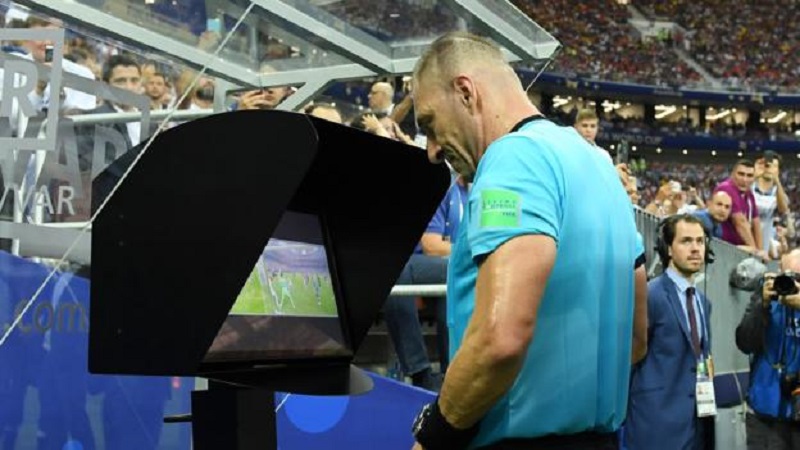Soccer’s Video Assistant Referee has its pros and cons
Video Assistant Referee (VAR) is the latest technological introduction into the soccer world. It sounds plain and simple, an assistant referee that can pull up video from certain plays and help the on-pitch first referee make the correct decisions, thereby reducing and possibly eliminating the possibility of incorrect game-changing calls and decisions.
While that may sound simple, it’s much more complicated than that. VAR intervenes mostly in three instances: whether a goal has been scored within the rules of the game, whether a player has performed a dangerous enough tackle to earn himself expulsion from the game, or the big one, whether or not a player has committed a penalty. It also serves to identify if the referee has penalized the wrong player, but it isn’t used very often in these cases.
Since Its introduction to English football in the 2019 – 2020 Premier League season, VAR has been the topic of debate all around the world. Even though referees are able to rewind the previous play and make the correct decisions as they claim them to be, the number of inconsistencies has caused an uproar. Those opposed to the use of VAR give many reasons why it should be scrapped altogether, but those in favor of VAR will argue that it has improved the game.
People who want to keep the system argue that VAR has already been universally adopted by the biggest leagues around the world, and it would be too much work to turn the ship back around and not use the system. It also had a 99.3 percent success rate at the 2018 World Cup, and made for smooth sailing for the referees.
Some people also find entertainment in the adrenaline rush of seeing the referee running to the pitch side monitor to review the play for themselves, creating an added level of suspense. For most, however, it’s the simple fact that it allows referees to review the play, and make sure that the correct call is made.
The best example of how the use of VAR, if it had been in use at the time, would have had a drastic impact on the game is the legendary Maradona’s “Hand of God Goal” in the 1986 World Cup quarterfinals match between Maradona’s Argentina side and England. Early in the second half with the score tied at zero, Maradona jumped to head the ball but ended up hitting it with his hand, sending the ball past the British goalkeeper into the net. If VAR had been in use for that match, the goal would have certainly been disallowed. Many argue that without that goal, Argentina could have lost the game, which they won 2-1, and would not have gone on to win the World Cup that year.
Still, there are those who don’t like the VAR system and believe that it is nothing but harmful to the sport. These people argue that having the system in place severely delays the game and interrupts the overall flow of the game. They argue that the referee spends too much time listening to the VAR team at the Video Operating Room through his earpiece and also spends even more time at the on-field Video Review station watching the replays himself as he is the one that makes the final decision.
There is also a huge lack of transparency from the referees and the league officials as to why some of the VAR decisions are made. Fans may be more willing to accept the technology if they were provided an explanation as to why the VAR calls are made the way they are.
One of the biggest issue that fans have with the VAR is that their team might score a goal but they become hesitant to celebrate because they know within the minute the referee can reverse the goal and all their celebration and screaming would’ve been pointless. “I love the idea that a referee can see the replay and make sure that he made the correct decision,” said William Querido of Olympic Heights. “But the way it has been implemented and carried out has been overall disappointing.”
Ultimately VAR is here to stay. Some people will continue to support it and say it benefits the game while others will continue to say it is ruining the game, but in the end it does a little bit of both.











